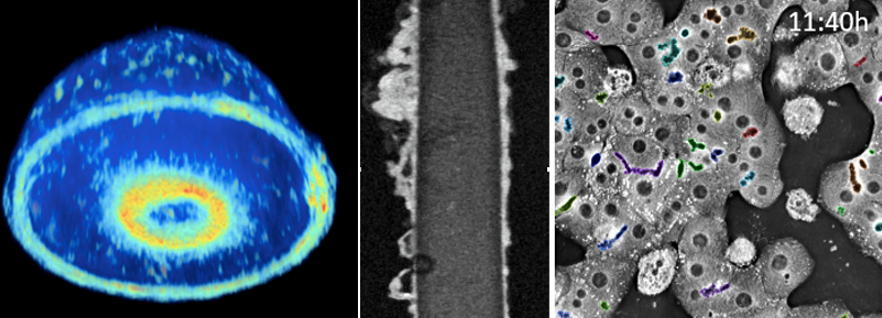Virgile Viasnoff
Directeur de recherche au Centre Interdisciplinaire de Nanoscience de Marseille (CINaM)
The liver is a highly structured organ with a variety of tubular vessels such as veins, arteries, bile ducts and bile canaliculi. In this talk I will focus on the case of tubulogenesis of the biliary secretory apparatus. The bile duct and bile canaliculi are both generated by the secretion of ions that maintain an osmotic imbalance between the inside and outside of the tube. When reconstituted in vitro, these systems mostly develop as spheres rather than tubes as expected from the isotropic nature of the osmotic pressure.
Over the past 10 years we have been working to understand what components of the microenvironment surrounding the cells induce the anisotropy of growth of the secretory lumen to transform them from scattered spheres into connected tubes. I will review our findings from single cells to whole organoids. I will also present the different technological approaches we have developed to reconstitute in vitro microniches to control and image the tubulogenesis of the human biliary tree.

Li Q
et al. Extracellular matrix scaffolding guides lumen elongation by inducing anisotropic intercellular mechanical tension.
 Nature cell biology
Nature cell biology, 2016,
18: 311-318
Zhang Y
et al. Biomimetic niches reveal the minimal cues to trigger apical lumen formation in single hepatocytes.
 Nature materials
Nature materials, 2020,
19(9): 1026-1035
Rajendiran H
et al. New class s of liver organoids with tubular bile ducts.
Submitted